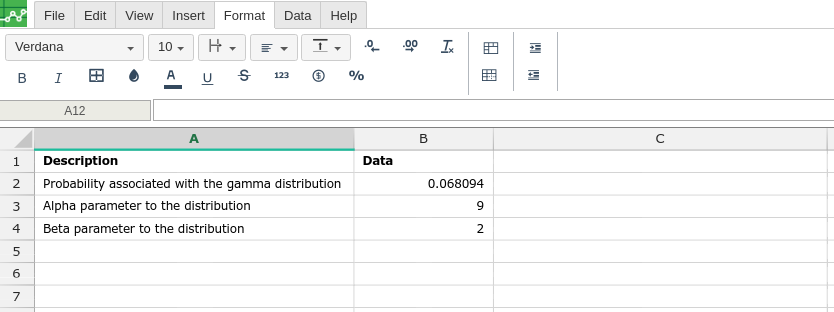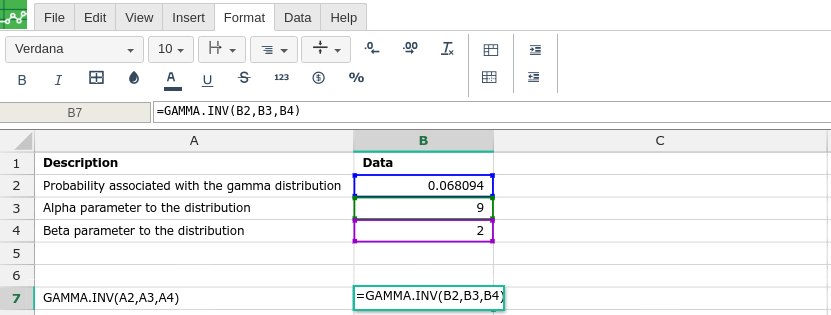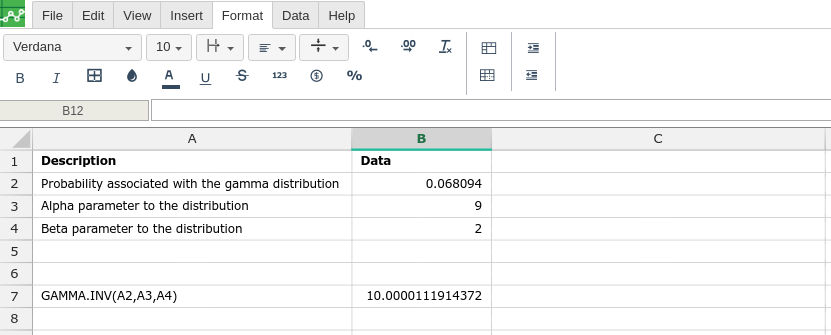GAMMA.INV
Definition
Returns the inverse of the gamma cumulative distribution. If p = GAMMA.DIST(x,...), then GAMMA.INV(p,...) = x. You can use this function to study a variable whose distribution may be skewed.
Sample Usage
Syntax
GAMMA.INV(probability,alpha,beta)
The GAMMA.INV function syntax has the following arguments:
Probability Required. The probability associated with the gamma distribution.
Alpha Required. A parameter to the distribution.
Beta Required. A parameter to the distribution. If beta = 1, GAMMA.INV returns the standard gamma distribution.
Remarks
If any argument is text, GAMMA.INV returns the #VALUE! error value.
If probability < 0 or probability > 1, GAMMA.INV returns the #NUM! error value.
If alpha ≤ 0 or if beta ≤ 0, GAMMA.INV returns the #NUM! error value.
Given a value for probability, GAMMA.INV seeks that value x such that GAMMA.DIST(x, alpha, beta, TRUE) = probability. Thus, precision of GAMMA.INV depends on precision of GAMMA.DIST. GAMMA.INV uses an iterative search technique. If the search has not converged after 64 iterations, the function returns the #N/A error value.
In order to use the GAMMA.INV formula, start with your edited Excellentable:

Then type in the GAMMA.INV formula in the area you would like to display the outcome:

By adding the values you would like to calculate the GAMMA.INV formula for, Excellentable will generate the outcome:

A
|
B
|
|
|---|---|---|
1
|
||
2
|
||
3
|
||
4
|
||
5
|
||
6
|
||
7
|
